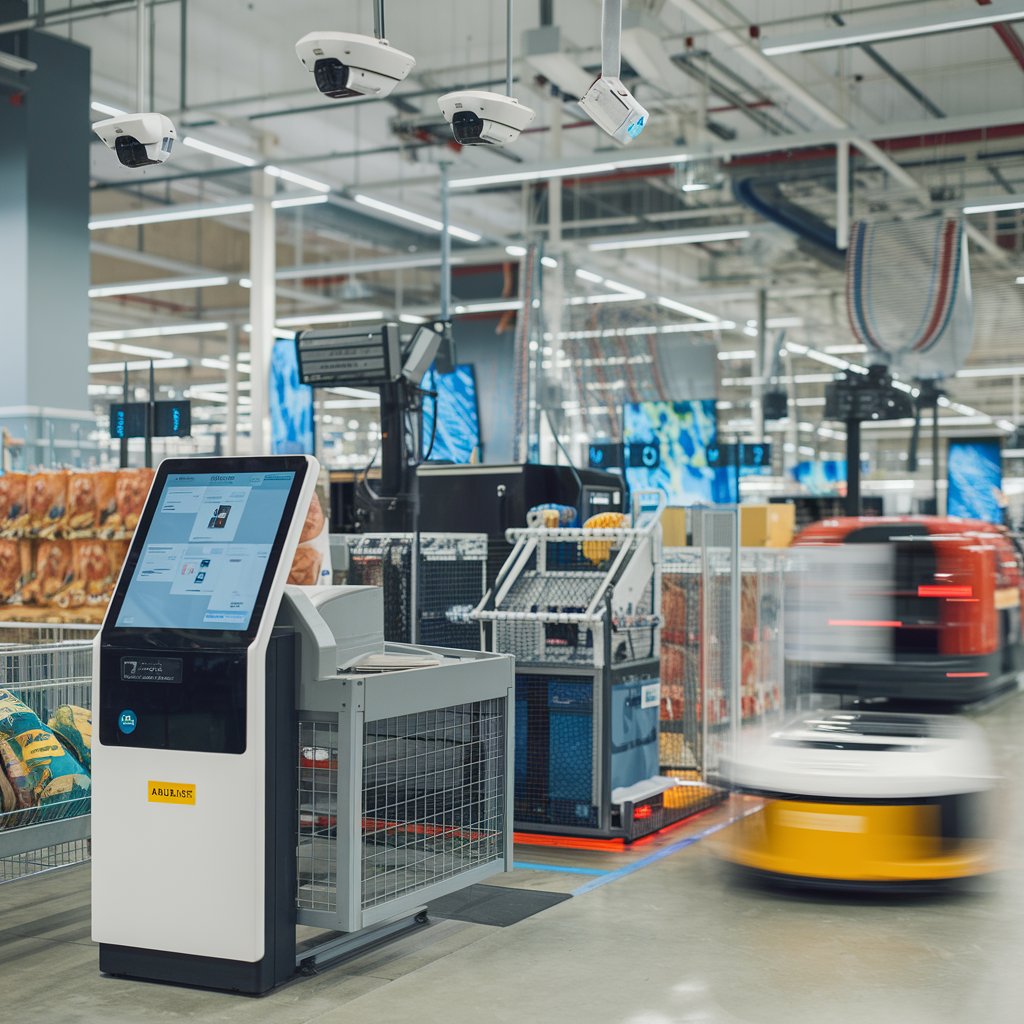The retail landscape is undergoing a profound transformation, driven by advancements in technology and evolving consumer expectations. Retail automation has emerged as a pivotal trend, reshaping how businesses operate and how customers interact with brands. As we navigate this new era of intelligent shopping, it’s essential to explore the latest trends in retail automation and their implications for the future of the industry.
The retail automation industry is expected to be valued at USD 27.6 billion in 2024 and is projected to reach USD 44.3 billion by 2029; it is expected to grow at a CAGR of 9.9% during the forecast period. The increasing demand rising demand for high-quality and fast service to consumers and the increasing adoption of integrated automated technology in warehouses are the key drivers fueling the expansion of the retail automation industry. Restraints such as regular maintenance and meeting regulatory compliance hinder market growth. However, factors such as increased transparency in supply chain management and enhanced retail experience for consumers by leveraging automation technologies provide lucrative opportunities for market players in coming years.
1. The Rise of Contactless Shopping
One of the most significant shifts in retail automation is the growing adoption of contactless shopping solutions. In response to the pandemic, consumers have become increasingly concerned about safety and hygiene, leading to a surge in demand for contactless payment options and self-service kiosks. Retailers are investing in technologies that enable customers to scan items and pay using mobile devices, reducing the need for physical interaction with staff or cash.
These systems not only enhance the shopping experience but also improve operational efficiency. By streamlining checkout processes, retailers can reduce queues and increase turnover, allowing for a more seamless customer experience. As consumers continue to prioritize safety, contactless shopping is expected to remain a staple in retail automation strategies.
2. Inventory Management Through AI and IoT
Effective inventory management is critical for retail success, and automation is playing a key role in optimizing this aspect of operations. The integration of Artificial Intelligence (AI) and the Internet of Things (IoT) is revolutionizing how retailers track inventory levels, predict demand, and manage supply chains.
Smart shelves equipped with sensors can monitor stock levels in real time, automatically notifying staff when items need restocking. AI algorithms analyze sales data and market trends to forecast demand, enabling retailers to maintain optimal inventory levels and reduce excess stock. This not only minimizes waste but also ensures that customers find the products they want when they visit stores, ultimately enhancing satisfaction and loyalty.
Download PDF Brochure @ https://www.marketsandmarkets.com/pdfdownloadNew.asp?id=1247

3. Personalized Shopping Experiences
Personalization has become a hallmark of modern retail, and automation technologies are making it easier for retailers to deliver tailored experiences. By leveraging data analytics and machine learning, retailers can gain insights into customer preferences and behaviors, allowing them to offer personalized recommendations, promotions, and targeted marketing.
Automation tools, such as chatbots and virtual assistants, are also playing a crucial role in enhancing customer engagement. These AI-driven solutions provide real-time support, answering queries and guiding customers through their shopping journeys. As consumers increasingly expect personalized interactions, retailers that embrace these automated solutions will be better positioned to meet customer needs and foster brand loyalty.
4. Robotics in Retail Operations
Robotics is another trend making waves in the retail automation sector. From warehouse management to customer service, robots are being deployed to enhance efficiency and streamline operations. Automated guided vehicles (AGVs) can transport goods within warehouses, significantly speeding up fulfillment processes and reducing labor costs.
In-store robots are also being used for tasks such as inventory checks and product recommendations. For example, some retailers have introduced robots that roam the aisles, scanning shelves for stock levels and ensuring products are correctly displayed. This not only helps maintain inventory accuracy but also frees up staff to focus on customer service and engagement.
5. The Future of Retail Automation
As technology continues to evolve, the future of retail automation looks promising. The integration of advanced technologies such as augmented reality (AR), virtual reality (VR), and advanced analytics will further enhance the shopping experience. Retailers are already experimenting with AR applications that allow customers to visualize products in their homes before making a purchase, bridging the gap between online and in-store shopping.
Moreover, as sustainability becomes a critical focus for consumers, automation can help retailers optimize their supply chains and reduce waste, aligning their operations with environmentally friendly practices. By embracing automation, retailers can not only enhance their operational efficiency but also meet the demands of conscious consumers.
The era of intelligent shopping is here, driven by the rapid advancement of retail automation technologies. From contactless shopping and AI-powered inventory management to personalized experiences and robotics, the trends shaping the retail landscape are transforming how businesses operate and how customers shop. As retailers navigate this evolving landscape, embracing these automation trends will be essential for driving growth, enhancing customer satisfaction, and staying competitive in a fast-paced market. The future of retail is not just about selling products; it’s about creating seamless, personalized experiences that resonate with consumers in an increasingly digital world.
The retail automation companies includes many major Tier I and II players like
- Honeywell International Inc. (US),
- NCR VOYIX Corporation. (US),
- Diebold Nixdorf, Incorporated. (US),
- Zebra Technologies Corp. (US),
- Hangzhou Hikvision Digital Technology Co., Ltd. (China), and others. These players have a strong market presence in advanced packaging across various countries in North America,
